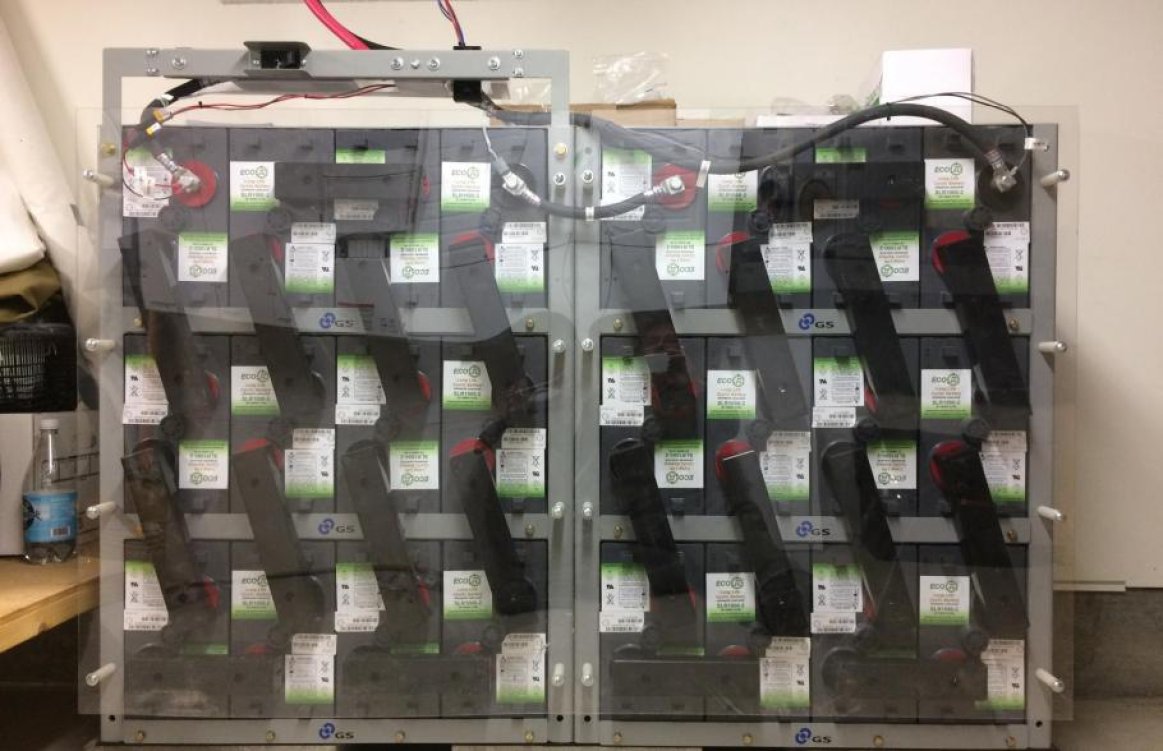
Review of 2017, over 93% of the total new electricity generating additions in 2016. Solar plus energy storage has even more potential than solar. The storage market can grow and adopt lessons learned based on the transformations of the solar market. While solar and energy storage become an integral part of the utility structure, see New York policy, an opportunity for energy storage presents itself now more than ever before.
But how do we begin integrating storage into our PV systems? And particularly, if we focus on batteries, which batteries do we use? Various battery technologies are thoroughly examined in this Solar Power World article, including the nano-carbon AGM battery. The Super Long Cycle Life (SLC) Valve Regulated Lead Acid Battery by GS Battery is one of the most reliable and competitive solutions on the market.
A standard absorbed glass mat (AGM) valve regulated lead-acid (VRLA) battery is comprised of two plates of lead suspended in diluted sulphuric acid. The lead plates act as electrodes and the sulphuric acid acts as the electrolyte. To differentiate the positive electrode from the negative electrode, the electrode is coated with a grid and a paste to act as current collectors on the positive plate. The performance of the grid is improved by adding current-carrying separators. The GS VRLA enhances the grid, plate, and separator functions. A higher ratio of carbon in the negative plate active material paste reduces sulfation on the negative grid. Additionally, the “nano-carbon” technology improves cycle life performance by increasing the ratio of carbon in the negative active material paste. This allows the negative plate to achieve a greater charging reaction. The GS VRLA battery has a higher density of glass fiber separator in the SLR-1000 battery model. With 5000 cycles at 70% depth of discharge, the SLR-1000 battery is unparalleled. The battery is comprised of 2V cells in a 48V configuration. Each cell is housed in a polypropylene resin container to add protection against water loss and wide temperature exposures.
GS battery is one of the oldest Japanese battery manufacturers and Greentech Renewables is the number one reseller of the GS SLR-1000 batteries in the world. Most Greentech Renewables projects using the GS product use solar power as the generation source. However, a recent Greentech Renewables project in Alaska featured the GS SLR-1000 but didn’t include any solar power. Because there is no solar involved in this project, it offers unique insight into the daily life of a battery. Diesel generators are the sole source of power for the whole site. When the generators are running, they cover all the loads and they bring the battery to a full state of charge (SOC).
For energy storage usage, whether that be powering a microgrid, assisting in generator ramp up, or through demand charge management, the GS SLR-1000 nanocarbon battery is the most cost-effective and technologically advanced solution.